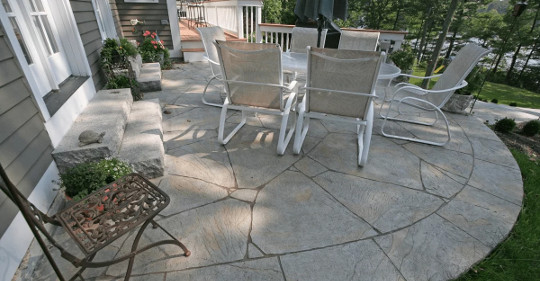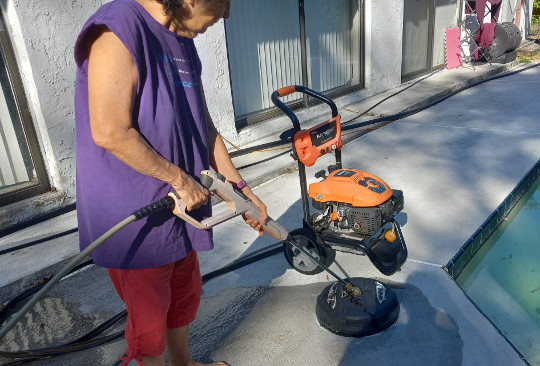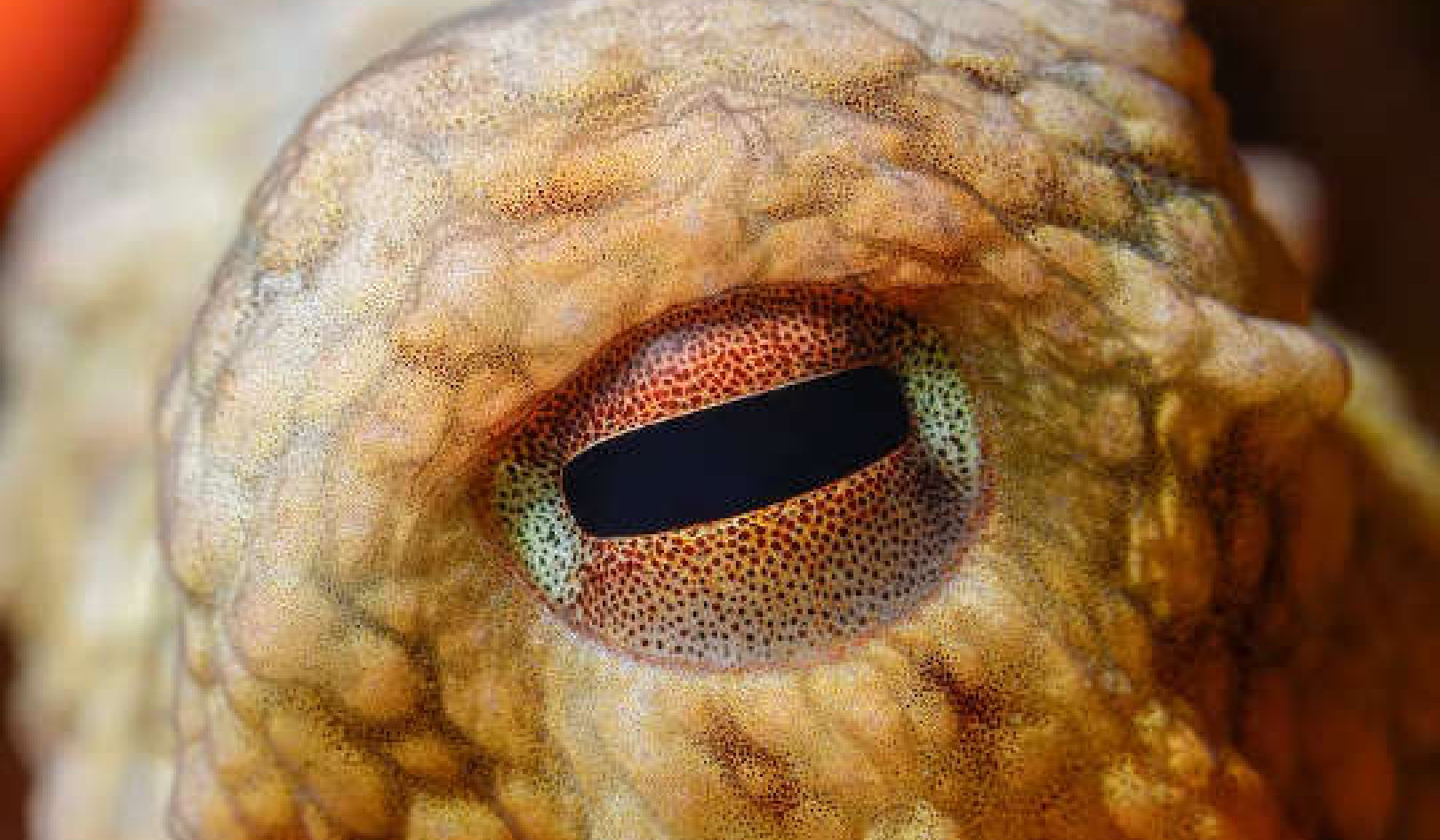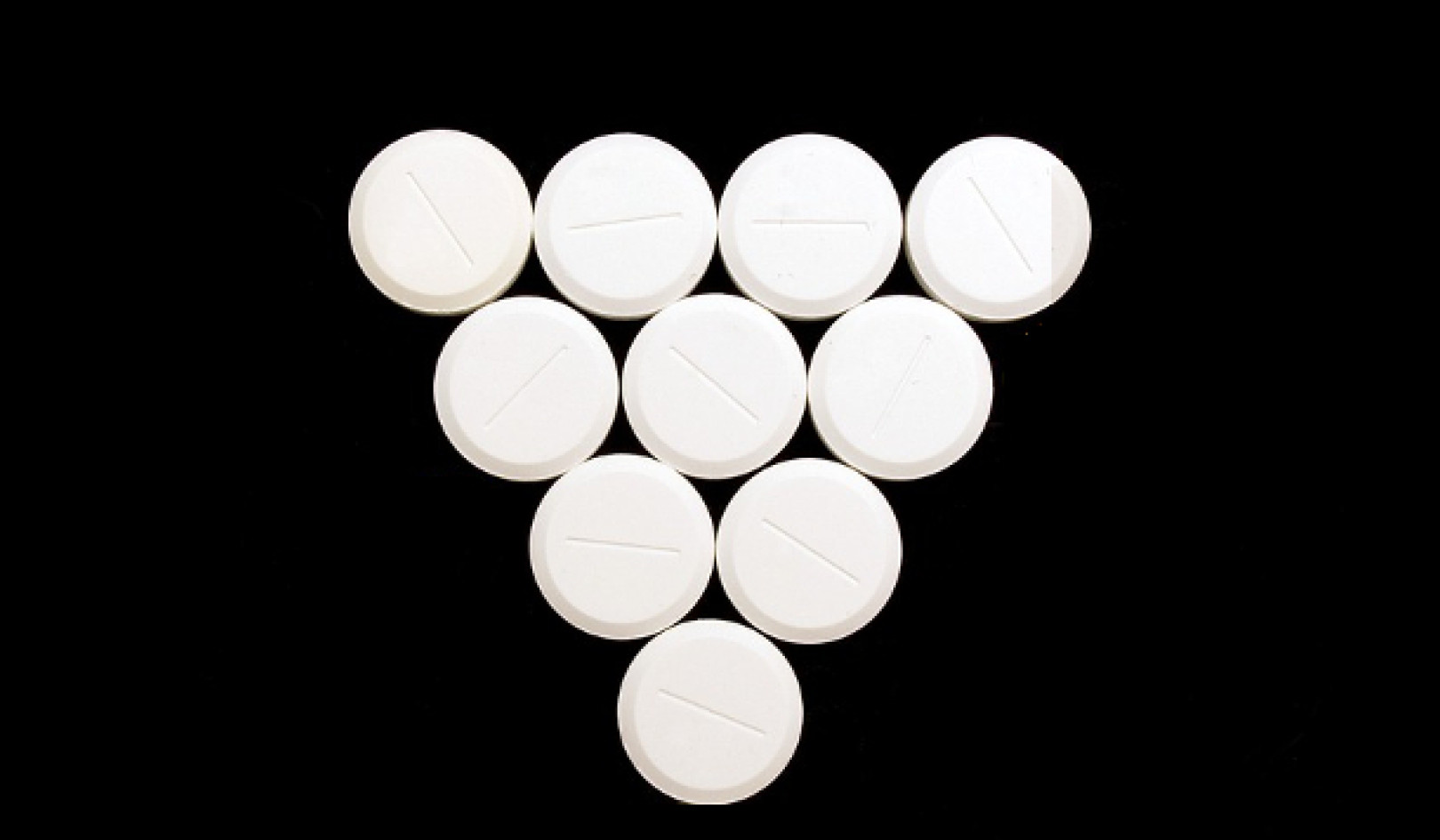
I have a large concrete pool deck and driveway in Florida. I have been cleaning mildew and mold off the deck for 25 years. I have done it by hand, using an electric power washer and a gas power washer with a surface cleaner attachment. Since I am gone for six months in the summer, the dirt, mildew, and mold can build up. And that can be quite a chore since I am away from touching up the deck.
First, quickly clean the deck with the power washer and surface attachment. Don't dilly-dally. Reclean the deck after adding a cleaner to the reservoir of the pressure washer. After the first clean, you now see more areas to clean. Last, spray the surface with solutions listed below to kill any remaining mildew and mold. Use one of the procedures below. Don't skip the pool chlorine warning.

I have been very happy using this Generac power washer and the Twinkle Star Pressure Washer Surface Cleaner. The power washer stills starts very easy after 3 years of use.
To power-wash a concrete deck that has mildew and mold, follow these steps:
- Prepare the area: Remove any furniture or objects from the deck and sweep away loose dirt and debris. Cover nearby plants and grass with plastic sheeting or tarps to protect them from the high-pressure spray.
-
Apply a cleaning solution: Mix a solution of 1 part bleach and three parts water in a garden sprayer or pump sprayer. Apply the solution to the concrete deck, focusing on areas with mold and mildew stains. Allow the solution to sit for 10-15 minutes.
-
Power wash: Use a power washer with a fan tip nozzle to rinse the deck, starting from the highest point and working your way down. Keep the nozzle at a distance of about 12-18 inches from the surface to prevent damage. Use a sweeping motion to cover the entire surface, focusing on areas with stains.
-
Rinse: After power washing, rinse the deck thoroughly with clean water, starting from the highest point and working your way down. Make sure to remove all the cleaning solution and debris from the deck.
- Allow to dry: Let the deck dry completely before replacing furniture or objects.
Skip The Bleach, Go Natural to Clean that Deck
Natural and eco-friendly alternatives to bleach that can effectively clean mildew and mold off the concrete. Here are some options:
-
Vinegar: Vinegar is a natural and effective way to kill mildew and mold. Mix equal parts white vinegar and water in a spray bottle and apply it to the affected areas. Let it sit for 10-15 minutes, then scrub with a brush and rinse with water.
-
Baking soda: Baking soda is another natural and non-toxic cleaner to remove mildew and mold from concrete. Mix 1/2 cup baking soda with 1 gallon of water and apply the solution to the affected areas. Scrub with a brush and rinse with water.
-
Hydrogen peroxide: Hydrogen peroxide is a natural bleaching agent that can kill mildew and mold. Mix 1 part hydrogen peroxide with 2 parts water in a spray bottle and apply it to the affected areas. Let it sit for 10-15 minutes, then scrub with a brush and rinse with water.
-
Tea tree oil: Tea tree oil is a natural antifungal and antibacterial agent that cleans mildew and mold off the concrete. Mix one teaspoon of tea tree oil with 1 cup of water in a spray bottle and apply it to the affected areas. Let it sit for 10-15 minutes, then scrub with a brush and rinse with water.
Note: Always wear protective clothing and gloves when using natural cleaning solutions, as they can irritate the skin. Also, test any cleaning solution on a small, inconspicuous area of the concrete before applying it to the entire surface to ensure it doesn't discolor or damage the concrete.
Using Pool Chlorine To Clean Concrete Warning
Pool chlorine can damage the surface of concrete if not used properly. Chlorine is a strong chemical that can react with certain types of concrete and cause discoloration, pitting, and surface degradation.
I have personally made this mistake. I used pool chlorine, which ate the concrete's surface and exposed the aggregate just below the surface.
If you are planning to use pool chlorine to clean a concrete surface, it is essential to follow these guidelines:
-
Dilute the chlorine: Dilute the chlorine with water according to the manufacturer's instructions. Use a concentration of 1 part chlorine to 10 parts water.
-
First, test a small area: Test the diluted chlorine solution on a small, inconspicuous concrete area to ensure it doesn't cause discoloration or damage.
-
Apply the solution evenly: Apply the chlorine solution to the concrete surface using a sprayer or brush, making sure to apply it evenly and thoroughly.
-
Rinse thoroughly: Rinse the concrete surface thoroughly with water after applying the chlorine solution. Use a high-pressure washer to remove all traces of the chlorine solution.
-
Neutralize the chlorine: Neutralize any remaining chlorine by applying a solution of 1 cup of white vinegar per gallon of water to the concrete surface. Let it sit for 10-15 minutes, then rinse thoroughly with water.
Again: Always wear protective clothing and gloves when handling chlorine, as it harms the skin and eyes. Also, avoid using chlorine on colored or decorative concrete, which can cause discoloration or damage. Happy cleaning! Right!!!! It's still work!
About the Author
 Robert Jennings is co-publisher of InnerSelf.com with his wife Marie T Russell. He attended the University of Florida, Southern Technical Institute, and the University of Central Florida with studies in real estate, urban development, finance, architectural engineering, and elementary education. He was a member of the US Marine Corps and The US Army having commanded a field artillery battery in Germany. He worked in real estate finance, construction and development for 25 years before starting InnerSelf.com in 1996.
Robert Jennings is co-publisher of InnerSelf.com with his wife Marie T Russell. He attended the University of Florida, Southern Technical Institute, and the University of Central Florida with studies in real estate, urban development, finance, architectural engineering, and elementary education. He was a member of the US Marine Corps and The US Army having commanded a field artillery battery in Germany. He worked in real estate finance, construction and development for 25 years before starting InnerSelf.com in 1996.
InnerSelf is dedicated to sharing information that allows people to make educated and insightful choices in their personal life, for the good of the commons, and for the well-being of the planet. InnerSelf Magazine is in its 30+year of publication in either print (1984-1995) or online as InnerSelf.com. Please support our work.
Creative Commons 4.0
This article is licensed under a Creative Commons Attribution-Share Alike 4.0 License. Attribute the author Robert Jennings, InnerSelf.com. Link back to the article This article originally appeared on InnerSelf.com






























